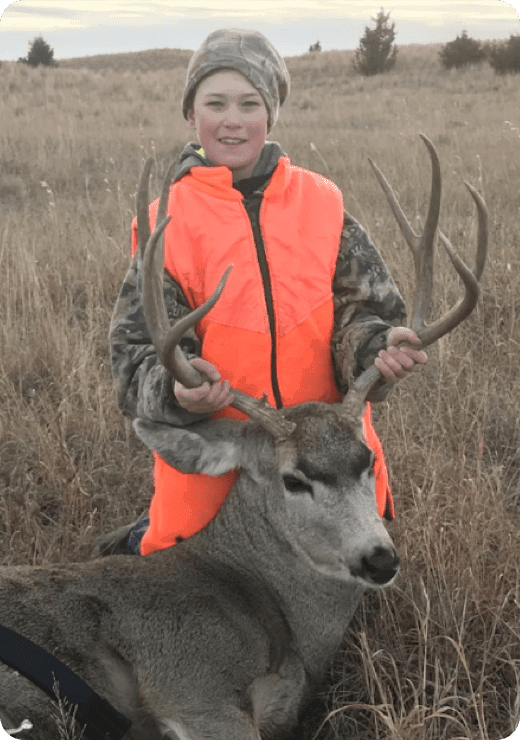Book your next Kansas Mule Deer hunt with LandTrust, the best way to hunt private land.
Find your next Kansas Mule Deer hunt by Unit.
Unit 1
Located in the northwest region of the state bordering Nebraska and Colorado, Unit 1 is known for its excellent mule deer hunting. The area is diverse, with a mix of rough draws, hilly rangeland, dry rolling farms, irrigated farms, and brushy creeks with tree-lined banks.
Unit 2
Located in the high plains region and bordering Colorado and Interstate 70 to the north, Unit 2 offers excellent hunting opportunities for mule deer. The landscape is a blend of prairies, dry farms, creek bottoms, and farmland - great habitat for a muley!
Unit 5
This unit stretches along both sides of the Arkansas River from Ness to Great Bend and almost to Hutchinson. Mule deer are less common in this region with small populations scattered throughout.
Unit 7
Located along the Nebraska border in the middle of the state, this unit supports a smaller population of mule deer. The majority of the area consists of farmland cultivated with crops such as corn, alfalfa, wheat, soybeans, and hay. Cover mainly consists of strips and clusters of trees lining rivers and creeks. To increase your chances, concentrate your efforts in brushy thickets, marshy regions, and wooded areas, while looking for deer feeding on open slopes or fields during low light conditions.
Unit 17
Unit 17 encompasses Hamilton, Kearny, and Finney counties, as well as parts of 14 other counties. Located on the high plains, this unit borders Colorado and is mostly made up of wide-open grasslands, dry farms, and irrigated crop fields. The area supports lower numbers of mule deer, who make their home primarily on private lands.
Unit 18
This arid prairie unit in the southwestern corner of the state is home to whitetail and mule deer. The land in this region is generally flat to slightly rolling, though there are some hilly areas that are not suitable for farming. There are also a few cliffs that overlook the Cimarron River, which is the main drainage for the area.
Discover More
- Kansas Whitetail Hunting Units
- Kansas Turkey Hunting Units
- Kansas Waterfowl Hunting Units
- Kansas Quail Hunting Units
- Kansas Dove Hunting Units
- Kansas Coyote Hunting Units
- Kansas Pheasant Hunting Units
- Kansas Rabbit Hunting Units
- Kansas Partridge Hunting Units
- Kansas Antelope Hunting Units
- Kansas Duck Hunting Units
- Kansas Other Hunting Units

